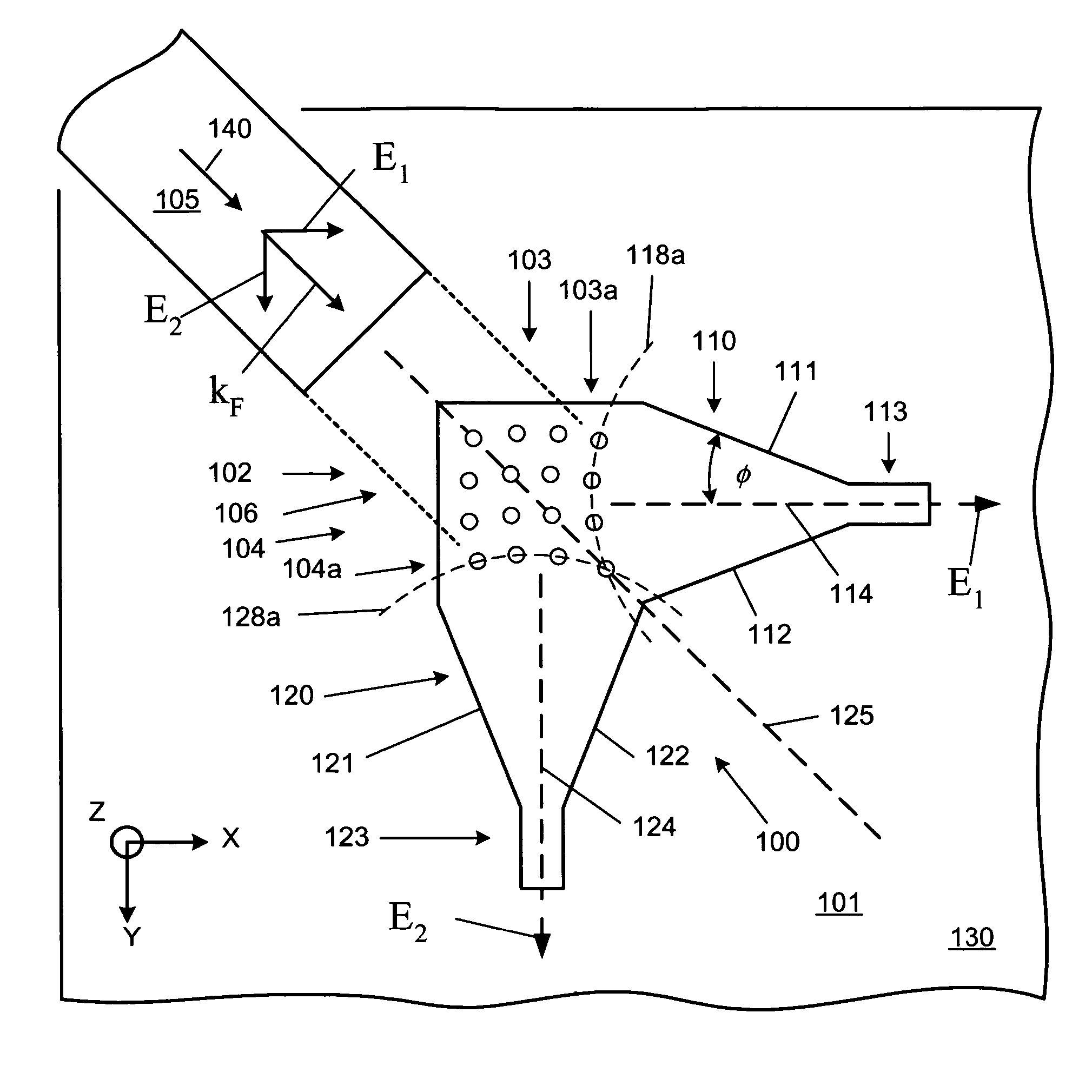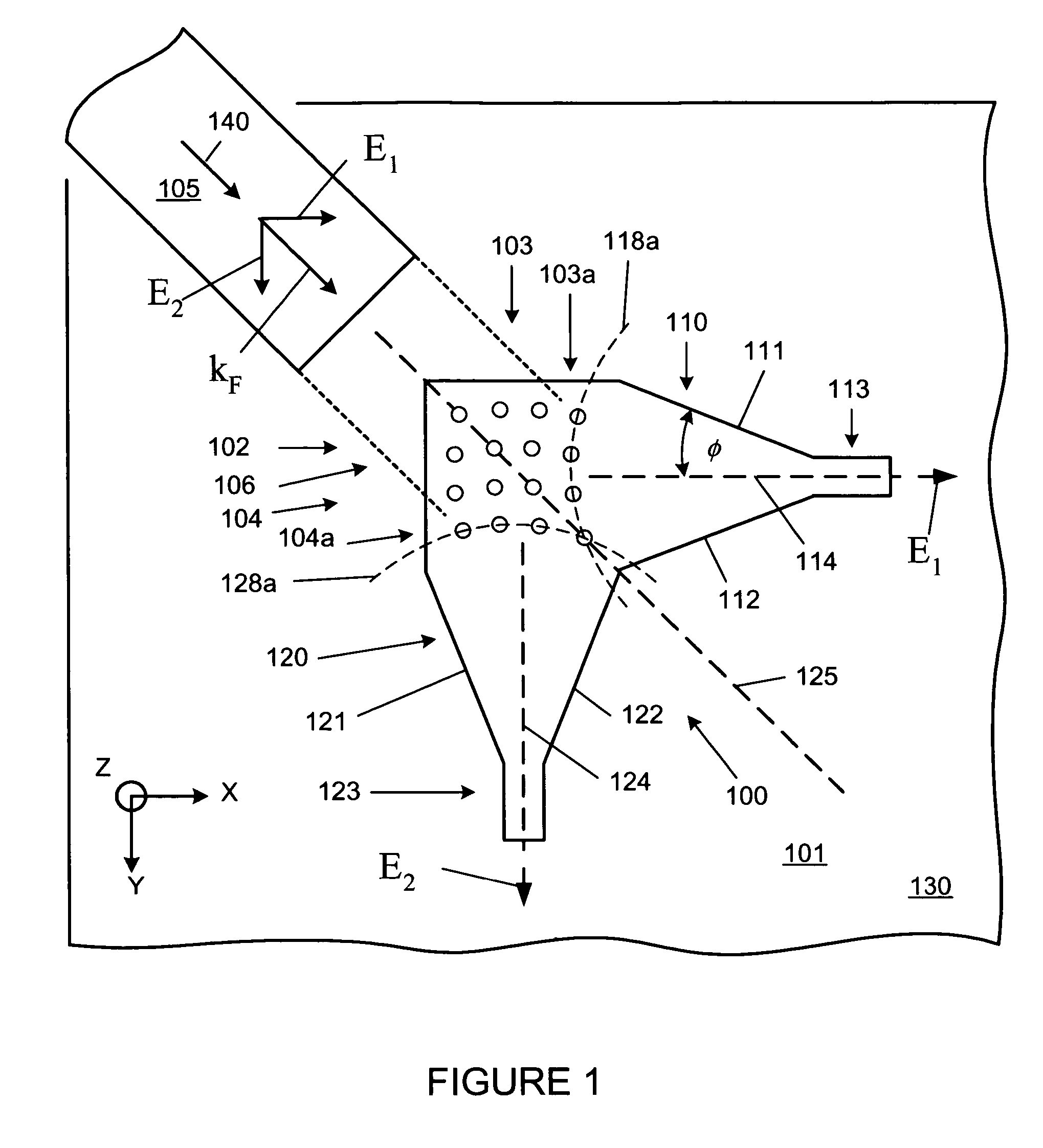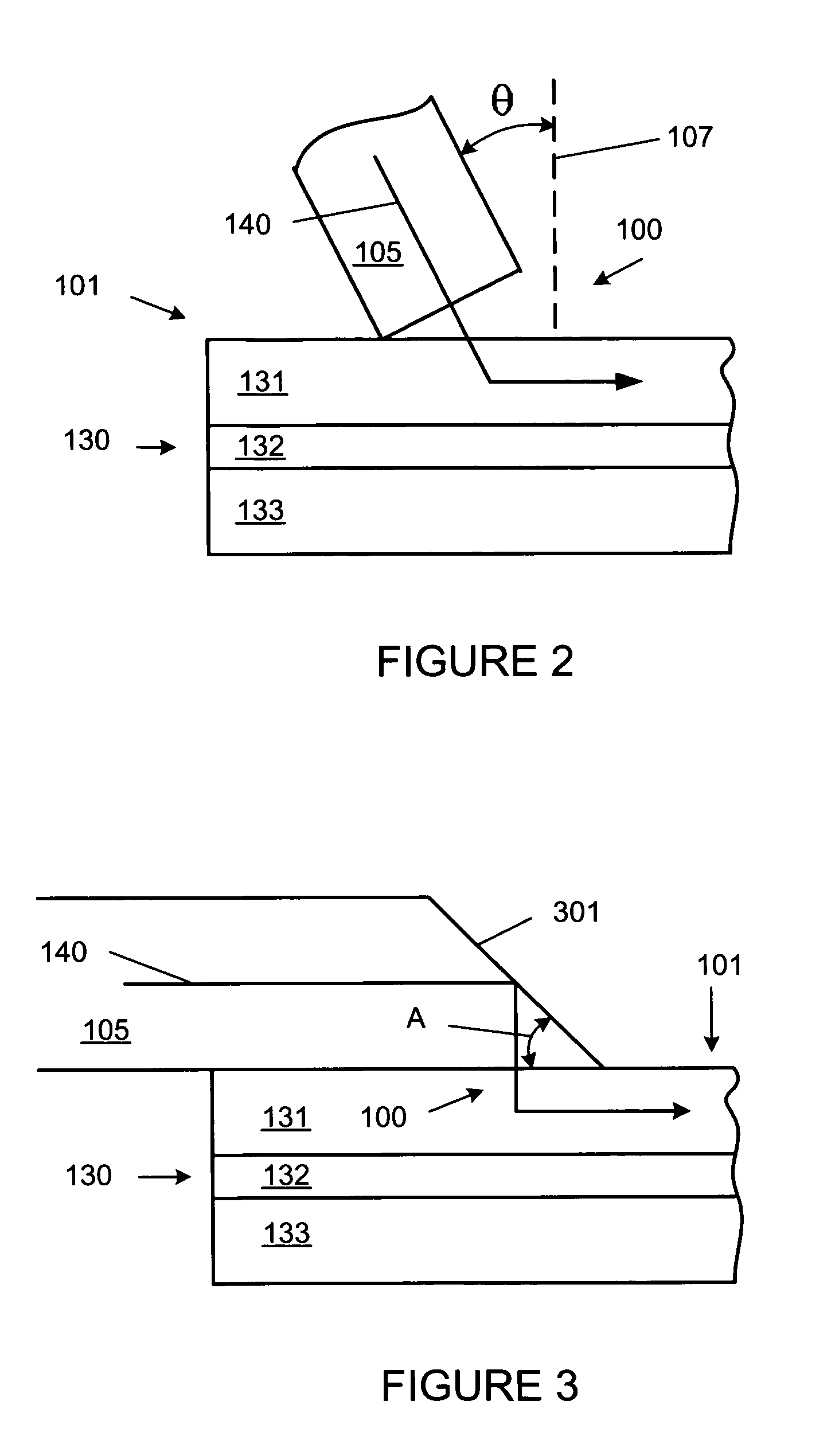Polarization splitting grating couplers
a grating coupler and polarization technology, applied in the field of polarization splitting grating couplers, can solve the problems of significant signal loss and distortion, random power transfer between the two polarizations, and the difficulty of connecting an optical signal from a fiber to a waveguide using a waveguide grating coupler
- Summary
- Abstract
- Description
- Claims
- Application Information
AI Technical Summary
Benefits of technology
Problems solved by technology
Method used
Image
Examples
Embodiment Construction
[0025]FIG. 1 is a top view of an integrated polarization splitting waveguide grating coupler, not to scale, according to one embodiment of the present invention. Polarization splitting grating coupler (herein “PSGC”) 100 is part of integrated circuit 101, which has been built on substrate 130. PSGC 100 connects light between optical element 105 and integrated circuit 101. In FIG. 1, optical element 105, such as an optical fiber, has been shown above and off to the side of integrated circuit 101 and thus is not intended to provide a figure of a system during operation. PSGC 100 includes cross grating 102, flared waveguides 110 and 120 and linear waveguides 113 and 123. Waveguides 113 and 123 connect optical signals to waveguides or other optical devices, not shown, on integrated circuit 101. The cross grating 102 includes many light scattering elements 106. The substrate 130 can be made of any of a variety of substrates such as: silicon, silicon on insulator (SOI), silicon on sapphir...
PUM
 Login to View More
Login to View More Abstract
Description
Claims
Application Information
 Login to View More
Login to View More - R&D
- Intellectual Property
- Life Sciences
- Materials
- Tech Scout
- Unparalleled Data Quality
- Higher Quality Content
- 60% Fewer Hallucinations
Browse by: Latest US Patents, China's latest patents, Technical Efficacy Thesaurus, Application Domain, Technology Topic, Popular Technical Reports.
© 2025 PatSnap. All rights reserved.Legal|Privacy policy|Modern Slavery Act Transparency Statement|Sitemap|About US| Contact US: help@patsnap.com



